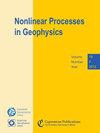A two-fold deep-learning strategy to correct and downscale winds over mountains
IF 2.4
4区 地球科学
Q3 GEOSCIENCES, MULTIDISCIPLINARY
引用次数: 0
Abstract
Abstract. Assessing wind fields at a local scale in mountainous terrain has long been a scientific challenge, partly because of the complex interaction between large-scale flows and local topography. Traditionally, the operational applications that require high-resolution wind forcings rely on downscaled outputs of numerical weather prediction systems. Downscaling models either proceed from a function that links large-scale wind fields to local observations (hence including a corrective step) or use operations that account for local-scale processes, through statistics or dynamical simulations and without prior knowledge of large-scale modeling errors. This work presents a strategy to first correct and then downscale the wind fields of the numerical weather prediction model AROME (Application of Research to Operations at Mesoscale) operating at 1300 m grid spacing by using a modular architecture composed of two artificial neural networks and the DEVINE downscaling model. We show that our method is able to first correct the wind direction and speed from the large-scale model (1300 m) and then accurately downscale it to a local scale (30 m) by using the DEVINE downscaling model. The innovative aspect of our method lies in its optimization scheme that accounts for the downscaling step in the computations of the corrections of the coarse-scale wind fields. This modular architecture yields competitive results without suppressing the versatility of the DEVINE downscaling model, which remains unbounded to any wind observations.纠正和降低山区风力的双重深度学习策略
摘要长期以来,评估山区地形局部尺度的风场一直是一项科学挑战,部分原因是大尺度气流与局部地形之间存在复杂的相互作用。传统上,需要高分辨率风馈源的业务应用依赖于数值天气预报系统的降尺度输出。降尺度模型要么从将大尺度风场与本地观测数据联系起来的功能出发(因此包括一个校正步骤),要么通过统计或动态模拟,在事先不了解大尺度建模误差的情况下,使用考虑本地尺度过程的操作。本研究提出了一种策略,通过使用由两个人工神经网络和 DEVINE 降尺度模型组成的模块架构,首先校正在 1300 米网格间距下运行的数值天气预报模式 AROME(中尺度作业研究应用)的风场,然后再对其进行降尺度处理。我们的研究表明,我们的方法能够首先修正大尺度模型(1300 米)的风向和风速,然后利用 DEVINE 降尺度模型将其精确降尺度到局部尺度(30 米)。我们方法的创新之处在于其优化方案,在计算粗尺度风场修正时考虑了降尺度步骤。这种模块化结构在不影响 DEVINE 降尺度模型多功能性的情况下产生了有竞争力的结果,因为 DEVINE 降尺度模型不受任何风观测数据的限制。
本文章由计算机程序翻译,如有差异,请以英文原文为准。
求助全文
约1分钟内获得全文
求助全文
来源期刊

Nonlinear Processes in Geophysics
地学-地球化学与地球物理
CiteScore
4.00
自引率
0.00%
发文量
21
审稿时长
6-12 weeks
期刊介绍:
Nonlinear Processes in Geophysics (NPG) is an international, inter-/trans-disciplinary, non-profit journal devoted to breaking the deadlocks often faced by standard approaches in Earth and space sciences. It therefore solicits disruptive and innovative concepts and methodologies, as well as original applications of these to address the ubiquitous complexity in geoscience systems, and in interacting social and biological systems. Such systems are nonlinear, with responses strongly non-proportional to perturbations, and show an associated extreme variability across scales.
 求助内容:
求助内容: 应助结果提醒方式:
应助结果提醒方式:


